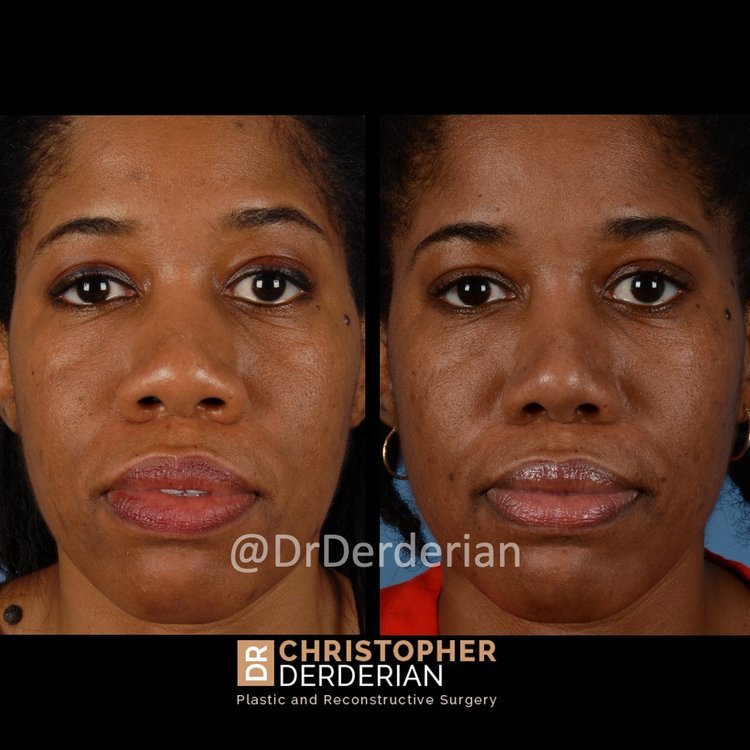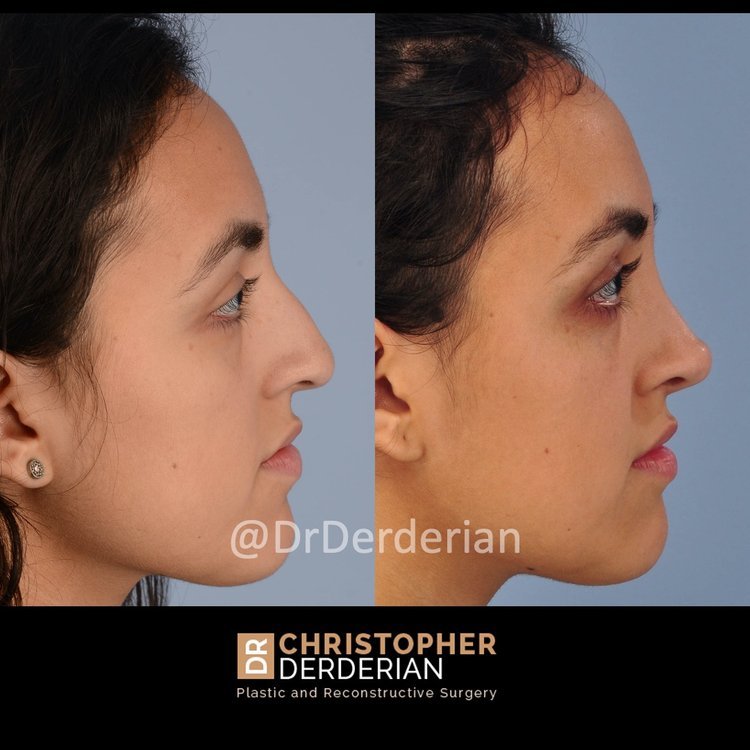Ethnic Rhinoplasty: Preserving Your Identity While Enhancing Features
Rhinoplasty, commonly referred to as a “nose job,” is one of the most sought-after plastic surgery procedures worldwide.
For many patients from diverse ethnic backgrounds, however, ethnic rhinoplasty requires a more specialized approach. Our goal is to preserve our patients' unique identity while achieving outstanding aesthetic goals.
If you're in Dallas seeking to refine your appearance without losing some of your distinct ethnicity traits, then ethnic rhinoplasty provides an ideal solution.
This blog explores the nuances of ethnic rhinoplasty, including techniques and results you can expect.
What is Ethnic Rhinoplasty Surgery?
Ethnic rhinoplasty refers to nose job procedures designed specifically for patients of non-Caucasian ethnic backgrounds, including African American, Asian, Latino, and Middle Eastern individuals.
Unlike traditional rhinoplasty, which focuses on Caucasian noses and nose characteristics, ethnic rhinoplasty strives to maintain the patient’s cultural identity while enhancing facial balance and symmetry.
Each ethnic group—whether African American, Asian, or Latino—possesses unique nasal traits, such as skin thickness, nasal bridge height, nostril size, and cartilage structure.
A skilled facial plastic surgeon understands these differences and uses specialized surgical techniques to create natural-looking results that harmonize with the patient’s overall facial features.
Why Consider Ethnic Rhinoplasty Procedure in Dallas?
Patients may seek ethnic rhinoplasty for various reasons, including:
Improving Facial Balance: Ethnic rhinoplasty can address nasal features that seem disproportionate to the rest of the face, such as a wide nasal bridge, wide nose, wide nostrils, or a bulbous nasal tip.
Restoring Confidence: For many rhinoplasty patients, achieving a harmonious nose shape improves self-esteem and confidence.
Preserving Identity: Unlike traditional “American rhinoplasty” techniques that may prioritize creating a Westernized nose shape, ethnic rhinoplasty prioritizes maintaining the unique anatomical traits of the patient’s ethnicity.
Correcting Functional Issues: Ethnic rhinoplasty can also address functional concerns, such as a deviated septum or breathing difficulties, while maintaining the patient’s natural appearance.
Unique Plastic Surgery Techniques for Different Ethnic Groups
African American Rhinoplasty
African American rhinoplasty often addresses wide nostrils, low nasal bridges, and thick skin. Patients may desire a more defined nasal tip or a slightly higher bridge, but without sacrificing their natural ethnic traits.
Surgical techniques include cartilage grafting to enhance definition and careful reshaping of the nostrils to achieve subtle yet impactful results.
Asian Rhinoplasty
Asian rhinoplasty typically focuses on augmenting the nasal bridge and refining the nasal tip. Many Asian patients have a flatter nasal bridge and softer cartilage, which require techniques such as cartilage grafting or the use of implants to create a more defined and harmonious nose.
Despite the changes, the goal of Asian ethnic nose job surgery is to ensure the results look natural and complement the patient’s unique anatomy.
Latino Rhinoplasty
Latino rhinoplasty often addresses a wide nasal bridge, bulbous nasal tip, or thick skin. Surgeons aim to refine the size and shape of the nose while maintaining harmony with the patient’s facial features.
Techniques for hispanic noses may involve narrowing the nostrils, refining the tip, and addressing any functional issues such as a deviated septum.
Middle Eastern Rhinoplasty
Middle Eastern rhinoplasty frequently focuses on addressing prominent nasal bridges or drooping nasal tips while maintaining the elegant and distinct features of Middle Eastern nose characteristics.
The goal is to enhance facial symmetry and balance without erasing the patient’s cultural identity.
The Importance of Preserving Ethnic Features
Ethnic rhinoplasty emphasizes the importance of celebrating diversity in appearance and facial characteristics. Patients from different ethnic backgrounds often have unique nasal traits that are central to their identity. That's why preserving these traits ensures that the results look authentic and natural.
A rhinoplasty surgeon specializing in ethnic rhinoplasty understands the value of subtle enhancements. For example, rather than creating a cookie-cutter nose, the surgeon works to refine specific areas, such as the nasal tip, nostrils, or bridge, while maintaining harmony with the patient’s facial proportions.
The goal of ethnic nasal surgery is not to conform to a singular beauty standard and rhinoplasty outcomes, but rather to enhance the patient’s natural beauty.
Ensuring Natural-Looking Results
Achieving natural results requires a deep understanding of the patient’s unique anatomy and aesthetic goals. During the rhinoplasty consultation, the surgeon evaluates the patient’s facial structure, skin thickness, and nasal traits to develop a customized surgical plan.
Key Elements for Natural Results:
Tailored Surgical Techniques: Every ethnic rhinoplasty procedure is unique. Surgeons use advanced techniques to ensure the changes are harmonious with the patient’s facial features.
Attention to Proportions: The size and shape of the nose should align with the patient’s face. A skilled surgeon ensures the nose complements the patient’s other facial features, including the eyes, lips, and cheekbones.
Minimizing Visible Scarring: Many ethnic rhinoplasty procedures are performed using the open rhinoplasty approach, which involves a small incision at the columella. This technique provides better access to the nasal structure while minimizing visible scars.
Post-Surgery Care: Following rhinoplasty surgery, proper aftercare is essential to achieving optimal results. Swelling and bruising may take months to fully subside, revealing the final outcome.
Advanced Surgical Techniques for Ethnic Rhinoplasty
Ethnic rhinoplasty employs specialized surgical techniques to address the unique needs of patients. These techniques include:
Cartilage Grafting: Reinforces the nasal structure, especially for patients with soft cartilage or low nasal bridges.
Tip Refinement: Enhances the definition of the nasal tip without compromising natural traits.
Nostril Reduction: Narrows wide nostrils to improve symmetry and facial balance.
Augmentation: In some cases, implants or cartilage grafts are used to add height to the nasal bridge or definition to the tip.
What to Expect During Your Rhinoplasty Consultation
The rhinoplasty consultation is a critical step in the process. Patients will meet with a board-certified plastic surgeon to discuss their goals and expectations. During the consultation, the surgeon will:
Evaluate the patient’s nasal anatomy, skin thickness, and facial proportions.
Discuss potential rhinoplasty techniques and incisions.
Show before-and-after photos of previous rhinoplasty patients to illustrate potential results.
Develop a customized surgical plan tailored to the patient’s unique needs.
Ethnic Nose Job Recovery and Results
Recovery from ethnic rhinoplasty requires patience and adherence to the surgeon’s guidelines. Swelling, bruising, and discomfort are common during the initial weeks.
Most patients begin to see improvements within a few weeks, but the final rhinoplasty results may take several months to a year to fully materialize.
Key Recovery Tips:
Follow all post-operative instructions, including caring for incisions and avoiding strenuous activities.
Attend follow-up appointments to ensure proper healing.
Maintain realistic expectations—the healing process varies for each patient.
Celebrating Diversity Through Ethnic Rhinoplasty
In summary, ethnic rhinoplasty is about more than altering the size and shape of the nose. It is a celebration of diversity and individuality. Patients from different ethnic groups can achieve aesthetic results that honor their heritage while enhancing their natural beauty. Whether addressing wide nostrils, a flat nasal bridge, or a bulbous tip, ethnic rhinoplasty offers a personalized approach to achieving facial symmetry and balance.






